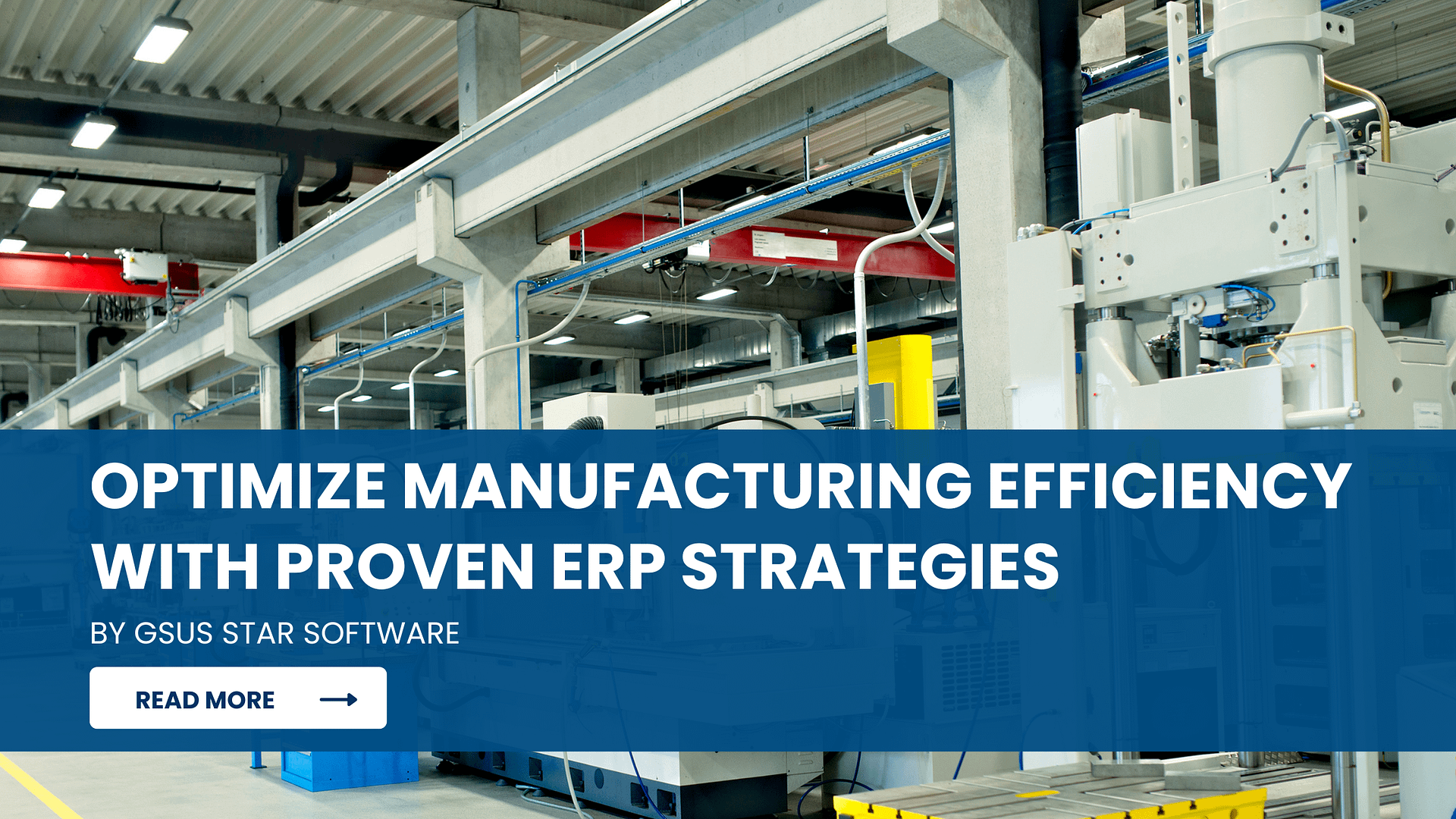In manufacturing, production efficiency isn’t just a goal—it’s a necessity for staying competitive and profitable. Efficient processes mean reduced costs, faster turnaround times, and happier customers. ERP (Enterprise Resource Planning) solutions like Microsoft Dynamics Business Central and SAP ERP have become essential tools for modern manufacturers aiming to optimize production. At GSUS Star Software, we specialize in implementing customized ERP solutions specifically designed to enhance your production capabilities and boost your competitive edge.
Understanding Production Efficiency
Production efficiency measures how effectively your manufacturing processes convert inputs into outputs. Common challenges manufacturers face include:
- Inventory mismanagement causing unnecessary costs.
- Production downtime leading to delayed deliveries.
- Inaccurate forecasting resulting in under or overproduction.
Addressing these challenges directly enhances profitability, customer satisfaction, and market responsiveness.
How ERP Systems Transform Manufacturing Efficiency
ERP software addresses key manufacturing challenges by providing:
- Real-time inventory management: Precise inventory tracking, reducing wastage and inventory holding costs.
- Streamlined scheduling: Optimized production schedules minimize downtime and maximize productivity.
- Demand forecasting: Accurate predictions based on data analytics, reducing production errors and meeting customer demands effectively.
For example, companies adopting Microsoft Dynamics Business Central typically see immediate improvements in productivity, operational clarity, and agility in decision-making.
Proven Statistics: ERP and Manufacturing Efficiency
- 20-30% increase in production efficiency (Gartner, 2023)
- Up to 25% reduction in inventory costs using SAP ERP (GSUS Case Study)
- Nearly 20% reduction in downtime with improved scheduling (Deloitte, 2023)
- 15-20% improvement in order fulfillment rates with ERP implementation (GSUS Client Data)
Metric | Improvement Rate |
Inventory Costs | Up to 25% |
Production Efficiency | 20-30% |
Downtime Reduction | Nearly 20% |
Order Fulfillment Rate | 15-20% |
GSUS Star Software: Enhancing Manufacturing Through ERP
GSUS Star Software has successfully transformed numerous manufacturing companies by implementing tailored ERP solutions such as SAP ERP and Microsoft Business Central. Our solutions help manufacturers:
- Customize workflows tailored to their unique production needs.
- Enhance real-time data visibility and decision-making capabilities.
- Provide comprehensive support and training to ensure smooth adoption.
Case Study Spotlight: A leading automotive parts manufacturer partnered with GSUS Star Software to implement SAP ERP, achieving a 23% reduction in inventory holding costs and a 19% increase in production throughput within the first year of deployment.
Best Practices: Maximizing Your ERP Benefits
To fully leverage your ERP investment, consider these best practices:
- Regularly update and maintain accurate ERP data.
- Provide continuous employee training to optimize ERP usage.
Utilize ERP-generated reports for proactive decision-making and continuous improvement.
Conclusion
Adopting ERP solutions like SAP ERP and Microsoft Business Central can significantly enhance your manufacturing efficiency, directly impacting profitability and competitiveness. GSUS Star Software’s expertise in custom ERP implementations is ready to guide your manufacturing business toward higher productivity and sustained growth.
Ready to elevate your manufacturing efficiency?
Schedule your free ERP consultation with GSUS Star Software →
